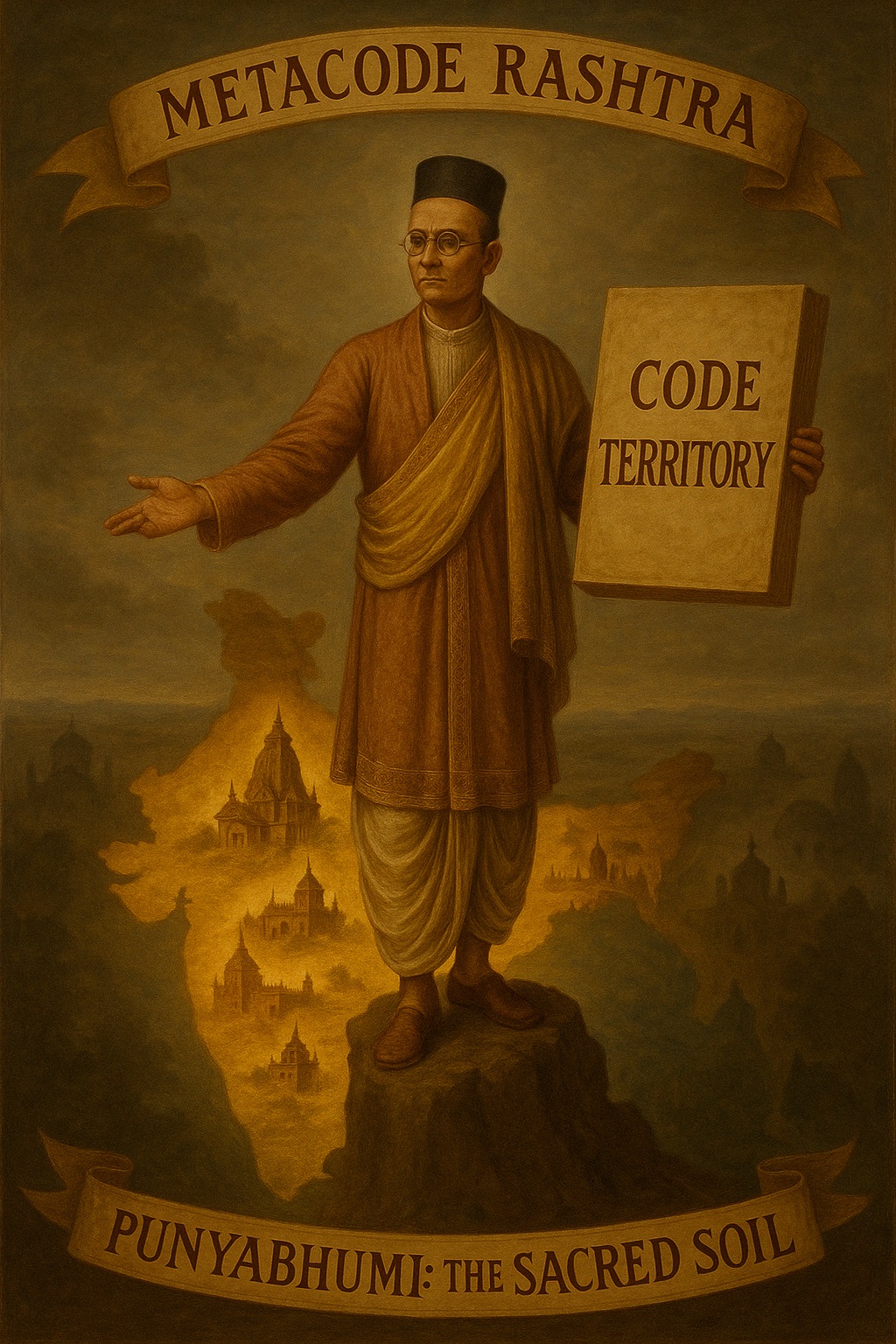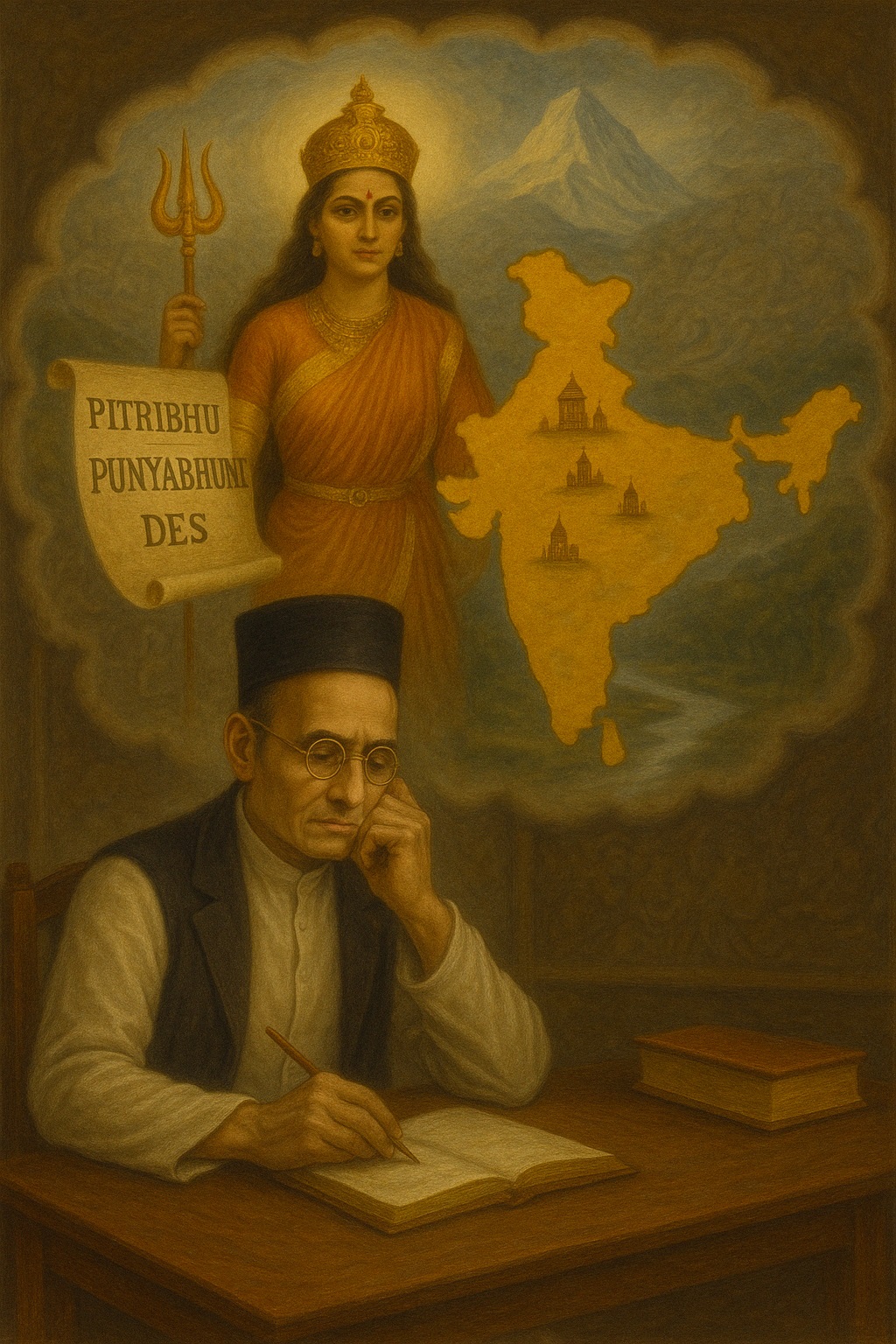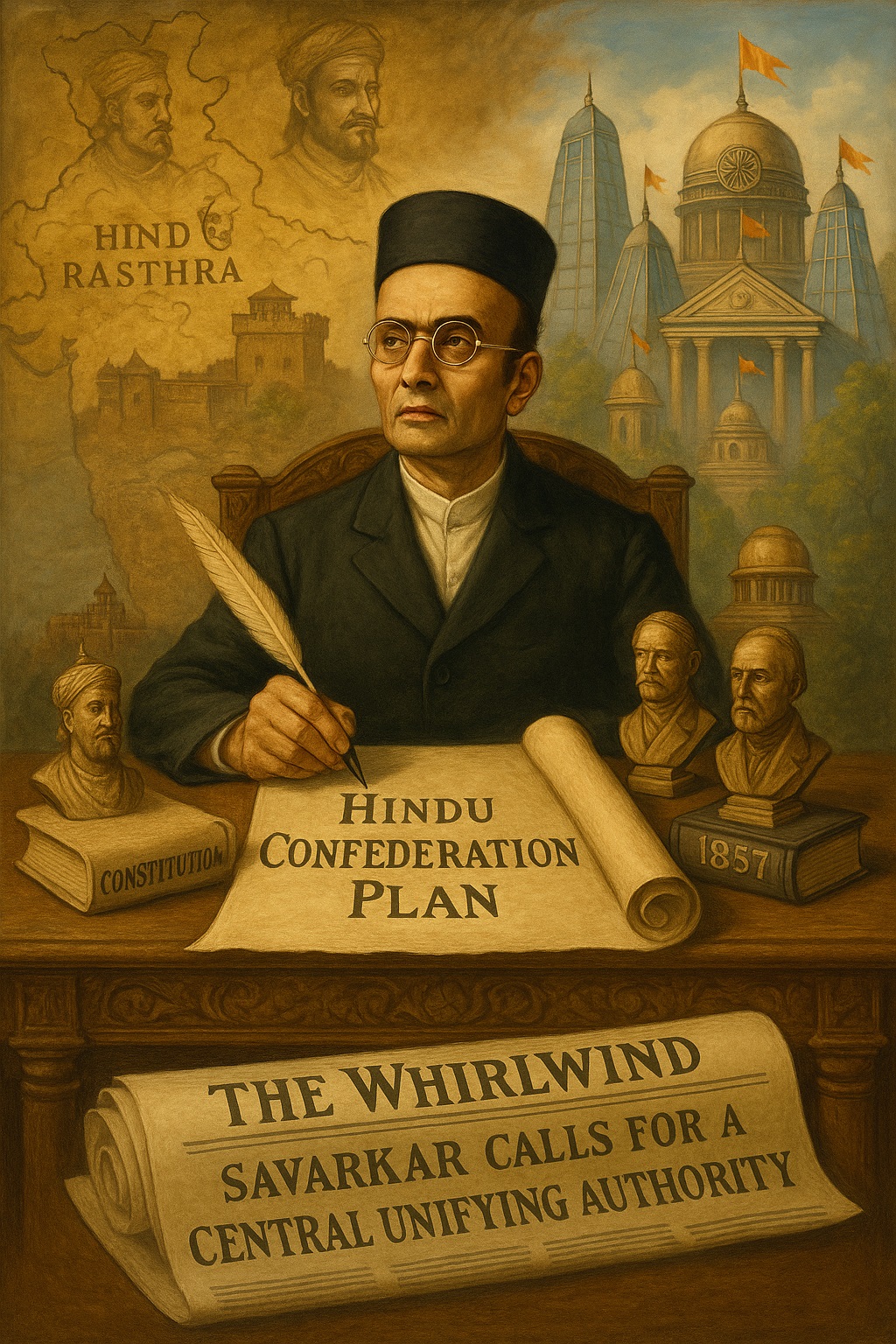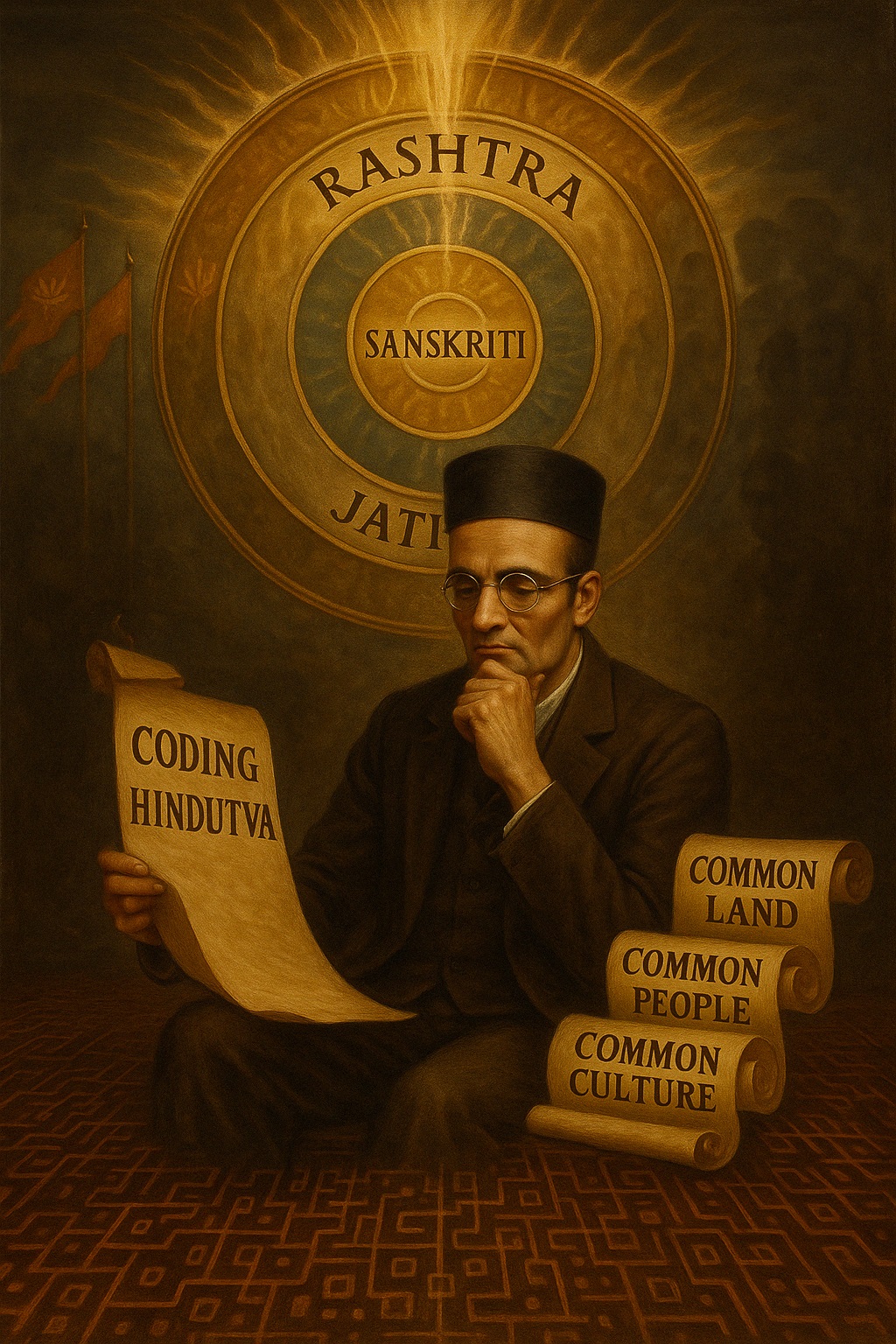Tag: Hindu Rashtra
-
Savarkar’s coding of Hindutva; Metacode Rashtra, Part 4; Code Territory (3/6) The concept of Punyabhumi, or “sacred land”, is central to Vinayak Damodar Savarkar’s definition of the Hindu Rashtra. While he acknowledges the geographical and territorial aspect of the nation (Pitribhu), he further elevates it by embedding a religious dimension, defining it as a “sacred…
-
Savarkar’s Coding of Hindutva; Metacode Rashtra, Part 1 The concept of Hindutva is deeply intertwined with geography, history, and a unique cultural identity. At its core, the idea of Rashtra – the first Metacode – serves as the constitutive element of the “common land.” This Metacode not only defines the territorial framework of Hindutva but…
-
Political Dimension of Hindutva, Part 4 When envisioning the future of Hindu Rashtra, Vinayak Damodar Savarkar did not propose a rigid, fixed model of governance. Instead, his ideas evolved within the historical and political context of his time. Rather than outlining a single, comprehensive framework, Savarkar explored various possibilities, ranging from a constitutional monarchy in…




